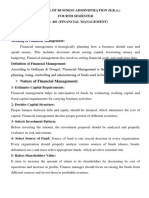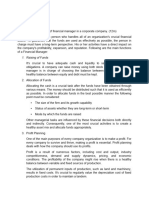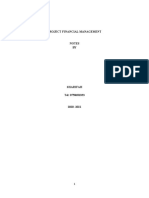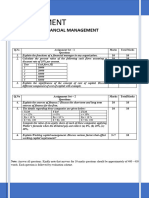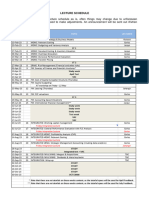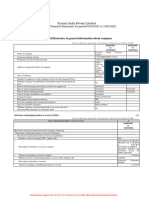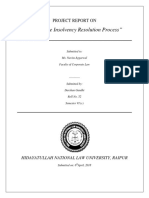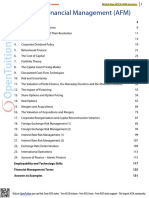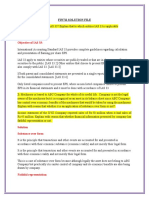0% found this document useful (0 votes)
185 views11 pagesFinancial Management - Assignment
The document is an assignment for a financial management course consisting of 3 questions. It includes:
1) A description of the key functions of a financial manager in any organization such as financial planning, capital budgeting, risk management, and financial reporting.
2) A calculation of the present value of a series of cash flows from years 1 to 5 using a 10% discount rate, which totals to $97,090.
3) An explanation of the significance of understanding the cost of capital for financial decision making. It also discusses the different components of cost of capital including cost of debt, equity, preferred stock, and retained earnings with examples.
Uploaded by
arjunviswan96Copyright
© © All Rights Reserved
We take content rights seriously. If you suspect this is your content, claim it here.
Available Formats
Download as DOCX, PDF, TXT or read online on Scribd
0% found this document useful (0 votes)
185 views11 pagesFinancial Management - Assignment
The document is an assignment for a financial management course consisting of 3 questions. It includes:
1) A description of the key functions of a financial manager in any organization such as financial planning, capital budgeting, risk management, and financial reporting.
2) A calculation of the present value of a series of cash flows from years 1 to 5 using a 10% discount rate, which totals to $97,090.
3) An explanation of the significance of understanding the cost of capital for financial decision making. It also discusses the different components of cost of capital including cost of debt, equity, preferred stock, and retained earnings with examples.
Uploaded by
arjunviswan96Copyright
© © All Rights Reserved
We take content rights seriously. If you suspect this is your content, claim it here.
Available Formats
Download as DOCX, PDF, TXT or read online on Scribd
/ 11













